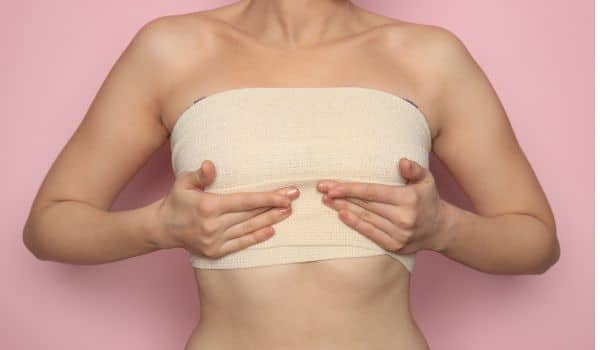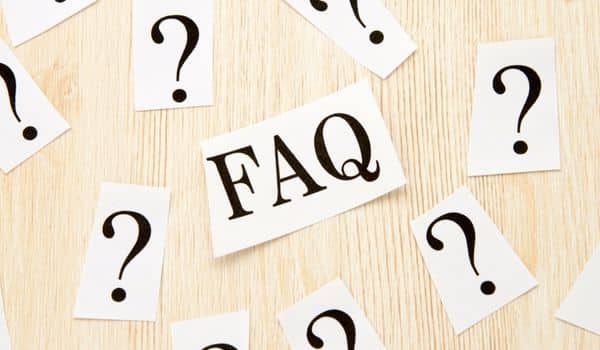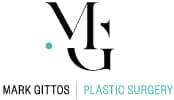Recovery after Breast Reduction Surgery Week by Week
You’ve made the decision to undergo breast reduction surgery. It’s a significant step towards your comfort, confidence, and overall health. However, the process doesn’t end with the procedure itself. The recovery period is an essential part of your process, and understanding recovery week by week after breast reduction surgery is crucial.
In this blog, Plastic Surgeon Dr Mark Gittos is going to walk you through the recovery process, offering you a roadmap to navigate the weeks following your surgery. He will cover what to expect, the necessary precautions to take, and how to ensure a smooth recovery.
Download Dr Mark Gittos’ Guide to Breast Reduction Surgery – Reduction Mammaplasty

What Is Breast Reduction Surgery?
Before discussing the recovery process, it’s important to understand what breast reduction surgery entails. This procedure, also known as reduction mammoplasty, is performed to remove excess breast fat, glandular tissue, and skin to achieve a breast size in proportion with your body. The surgery not only alleviates the discomfort associated with overly large breasts but also improves the overall body symmetry.
However, just like any other surgical procedure, breast reduction surgery requires a period of recovery. During this time, your body heals, adapts, and adjusts to the changes it has undergone. This recovery period is crucial to the success of the surgery and your overall well-being.
The Importance of a Recovery Plan after Breast Reduction Surgery
Post-surgery, your body needs time and care to heal properly. A well-structured recovery plan is crucial to ensure that this healing process is effective and safe. It not only helps manage post-operative pain and discomfort but also minimises the risk of complications.
A recovery plan also prepares you mentally for the changes your body will undergo during this period. It gives you a realistic expectation of the healing process and helps you stay patient and positive.
First Week after Breast Reduction Surgery- What to Expect
The first week after breast reduction surgery is usually the most challenging. You may experience pain, swelling, and discomfort in your breasts. Your plastic surgeon will prescribe pain medications to manage this discomfort, and it’s important to take them as directed.
You will also be advised to wear a surgical bra, which provides support to your breasts during the healing process. Rest is critical during this period. Avoid any strenuous activities and ensure you get plenty of sleep.
Finally, it’s crucial to keep an eye out for any signs of complications such as excessive swelling, intense pain, or signs of infection. If you notice any such symptoms, contact your healthcare provider immediately.
Week 2 after Breast Reduction – Progress and Precautions
During the second week after breast reduction, you’ll start to see some progress. The pain and swelling will start to subside, and you may be able to return to work, depending on the nature of your job.
But this doesn’t mean you’re ready to jump back into your regular routine entirely. Continue to avoid strenuous activities and exercises, as they might interfere with the healing process. It’s still important to wear the surgical bra for support and to help with the healing process.
Keep in mind that your body is still healing. Listen to it and give it the rest it needs. Your patience during this week will pay off in the long run.
Week 3 after Breast Reduction

By the third week after breast reduction surgery, you’ll notice more improvements. The swelling and bruising will continue to decrease, and your breasts will start to settle into their new shape.
You might also begin to adjust to the changes your body has undergone. This is a perfect time to start slowly incorporating light exercises into your routine. Make sure to avoid any activities that might strain your breasts.
It’s also important to continue maintaining a healthy diet. Proper nutrition aids in the healing process and helps your body recover faster.
Week 4 after Breast Reduction
The fourth week after breast reduction marks a significant milestone in your recovery journey. By now, most of the pain and swelling should be gone, and you’ll be able to see the results of your surgery more clearly.
You can gradually return to your regular activities, but remember to take it slow. Continue to avoid heavy lifting and strenuous exercises until your plastic surgeon gives you the go-ahead.
At this point, your plastic surgeon might also advise you to start massaging your scars. This helps to soften them and reduce their visibility.
After the First Month
After the first month, you’ll have passed the most critical period of your recovery. It’s important to remember that complete healing takes time. Some residual swelling might remain for a few more months, and your breasts will continue to settle into their final position and shape.
Continuing to follow a healthy lifestyle is key to maintaining the results of your surgery. This includes maintaining a stable weight, following a balanced diet, exercising regularly, and avoiding smoking.
Dr Mark Gittos’ Recovery Tips after Breast Reduction Surgery
- Follow Post-Op Instructions: Always adhere to the post-operative care instructions provided by Dr Gittos. This will include guidelines on cleaning the incision sites, changing dressings, and taking prescribed medications
- Rest and Sleep: Ensure you get plenty of rest, especially in the first few days post-surgery. Sleeping in an elevated position can help reduce swelling
- Wear a Supportive Bra: A surgical or compression bra will provide support, reduce swelling, and help in shaping the breasts during the recovery phase
- Avoid Strenuous Activities: Refrain from heavy lifting, vigorous exercise, and other strenuous activities for the time recommended by your plastic surgeon
- Monitor for Signs of Infection: Check the surgical sites regularly for signs of redness, unusual discharge, or increased pain, which could indicate an infection
- Stay Hydrated: Drink plenty of water to aid the healing process and flush out toxins
- Limit Alcohol and Tobacco: Both can impede the healing process. It’s recommended to avoid or limit consumption during the recovery phase
- Attend Follow-Up Appointments: Regular check-ups with your plastic surgeon are crucial to monitor healing and address any concerns
- Manage Pain: Take pain medications as prescribed. If you experience severe or prolonged pain, contact Dr Gittos
- Eat Nutritious Foods: A balanced diet rich in vitamins and minerals can promote faster healing. Consider foods high in vitamin C, protein, and zinc
- Avoid Direct Sunlight: Sun exposure can darken scars. If you’re outside, cover the incision sites or use a strong SPF sunscreen
- Stay Patient: Recovery is a gradual process. It’s essential to be patient and allow your body the time it needs to heal fully
- Seek Emotional Support: Surgery can be emotionally taxing. Consider joining a support group or speaking with a therapist to navigate any feelings or concerns
- Stay Informed: If you have any questions or uncertainties, don’t hesitate to reach out to your medical team. Being informed can alleviate anxiety and ensure you’re taking the best care of yourself
- Limit Exposure to Potential Irritants: Be cautious with the products you apply near the surgical sites, especially in the early stages of recovery. This includes lotions, creams, and perfumes. Opt for hypoallergenic or fragrance-free products to reduce the risk of skin irritation or allergic reactions
Navigating your journey week by week after breast reduction surgery might seem daunting, but with the right knowledge and preparation, you can ensure a smooth and successful recovery.
FAQs about Breast Reduction Recovery

How big do your breasts need to be to get a reduction?
- Breast reduction surgery isn’t solely determined by a specific breast size. Instead, it’s based on a combination of factors including physical discomfort, emotional distress, and overall health concerns related to the size of the breasts. While there’s no strict size requirement, candidates for breast reduction often experience back, neck, and shoulder pain, skin irritations, posture problems, or limitations in physical activities due to their breast size. It’s essential to consult with a plastic surgeon to determine if you’re a suitable candidate based on your unique circumstances.
Do breasts grow back after reduction?
- While breast reduction surgery removes excess breast tissue, it’s possible for breasts to increase in size after the procedure due to various reasons. Factors such as weight gain, hormonal changes, pregnancy, and ageing can contribute to breast growth. However, it’s unlikely for the breasts to return to their pre-surgery size unless there are significant changes in weight or hormonal factors. Regular monitoring and maintaining a stable weight can help in preserving the results of the surgery.
Will I lose weight after breast reduction surgery?
- Yes, you will lose some weight after breast reduction surgery, but it’s primarily from the removal of excess breast tissue. The amount of weight loss will depend on the volume of tissue removed. It’s essential to note that breast reduction is not a weight loss procedure. Its primary goal is to alleviate physical discomfort and improve breast proportionality. While there might be a slight decrease in overall body weight post-surgery, significant weight loss requires a combination of diet, exercise, and other lifestyle changes.
Do I have to lose weight before my breast reduction surgery?
- While there’s no strict weight requirement for breast reduction surgery, some surgeons may recommend reaching a stable weight before the procedure. Being close to your ideal weight can lead to more consistent and predictable surgical outcomes. Additionally, significant weight fluctuations after the surgery can affect the results and the shape of the breasts. It’s essential to discuss your weight and any related concerns with your plastic surgeon during the consultation process to determine the best approach for your individual circumstances.
How much weight can a breast reduction take off?
- The amount of weight removed during a breast reduction varies based on individual needs and desired outcomes. On average, surgeons might remove between 500 grams to 1,000 grams (or more) of tissue from each breast. But this can vary widely from one person to another. The primary goal of the surgery is to achieve a breast size in proportion to the body and alleviate any associated discomfort, rather than achieving a specific weight reduction.
Further Reading about Breast Reduction Surgery with Dr Mark Gittos
- Read Dr Gittos’ Breast Reduction Surgery Page
- Read Dr Gittos’ Areola Reduction Surgery Page
- Read Dr Gittos’ Blog about Heavy Breasts Are Causing Neck Ache or Back Ache? – Breast Reduction Might Help
- Read Dr Gittos’ Blog about How to Reduce Swelling and Bruising After Breast Reduction Surgery
- Read Dr Gittos’ Blog about Healthy Weight for Plastic Surgery – How BMI affects your Surgery Results
Medical References about Breast Reduction
- Long-term outcomes of breast reduction surgery
- Breast reduction surgery – Mayo Clinic
- Breast Reduction Techniques and Outcomes: A Meta-analysis
- Study Supports Benefits of Breast Reduction in Teens and Young Women
About Dr Mark Gittos FRACS (Plast) – New Zealand Plastic Surgeon
Practice locations in Herne Bay Auckland, Northland and Bay of Plenty – Kerikeri, Whangarei, New Plymouth & Tauranga
Dr Mark Gittos is a leading Specialist Plastic Surgeon and operates a practice in Herne Bay, Auckland and in the UK. The practice focuses on both surgical and non-surgical procedures, each designed to help restore, improve or change a physical characteristic or problem. The first step in every case is to talk through your personal requirements and explore all the options, before deciding on the most effective solution.
Dr Mark Gittos offers high quality, natural-looking cosmetic surgery results and is highly experienced in Breast, Body and Face Surgery having performed over 4000 Surgeries in the last 26 years. With worldwide expertise Dr Gittos is an expert in breast, face and body surgery for men & women.
Naturally, before any treatment is begun, we will explain clearly the advantages and risk factors; so that you have the information you need to make an informed decision that is best for you. Visit the practice to find out more.

NEXT STEPS
Please NOTE: Dr Gittos only performs surgery on non-smoker patients with a BMI less than 30. To check your BMI please visit the NZ Heart Foundation website. For help giving up smoking before surgery visit the Smoke Free website
Do your Research
- Read the Website and Blogs relevant to your procedure
- Browse our Frequently Asked Questions including how to choose a Surgeon for your procedure
- Download and read the FREE Guides to Surgery
What to Bring to your Plastic Surgeon Consultation
- Bring a friend or relative to help discuss the information and your choices
- Take lots of notes and read the documents provided thoroughly
- Dress in simple clothes as you may need to undress for examination
- Bring your medical referral and any relevant medical documents or test results
Book your Initial Surgery Consultation
- A Referral from your GP or specialist is helpful but NOT essential – you can have a consultation without a GP Referral
- Email us or Call on 09 529 5352 to arrange your surgeon consultation appointment.
- Book a consultation with Dr Gittos by paying the Consultation Fee – $350 incl GST
Traveling for Surgery? – Consider post-surgery luxury recovery in a Hotel with LuxeCare
Please contact us to arrange to book a consultation with our Specialist Plastic Surgeon or to speak with our Patient Care Advisor.
Send an enquiry form today or phone 09 529 5352 during Clinic Hours
